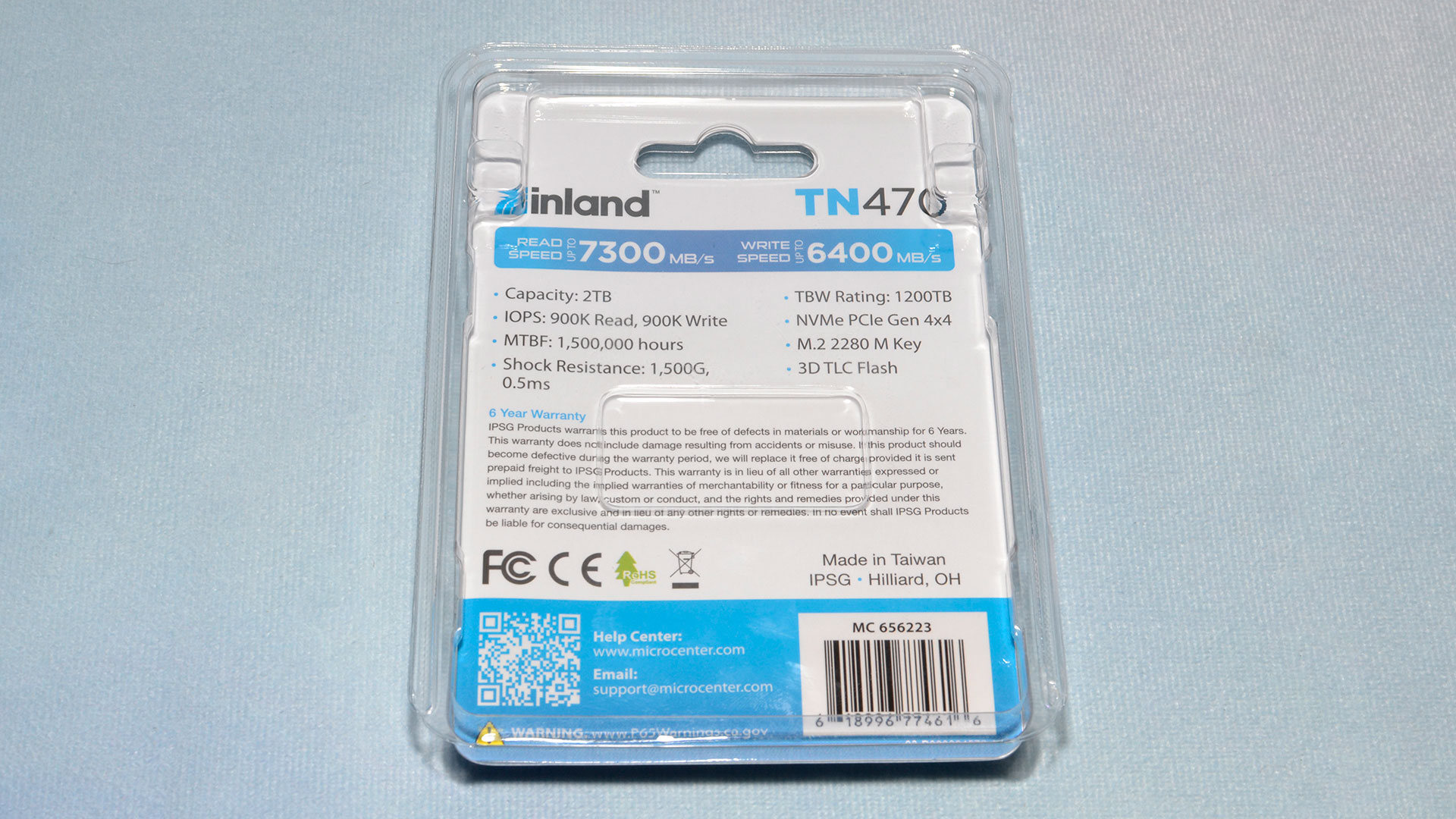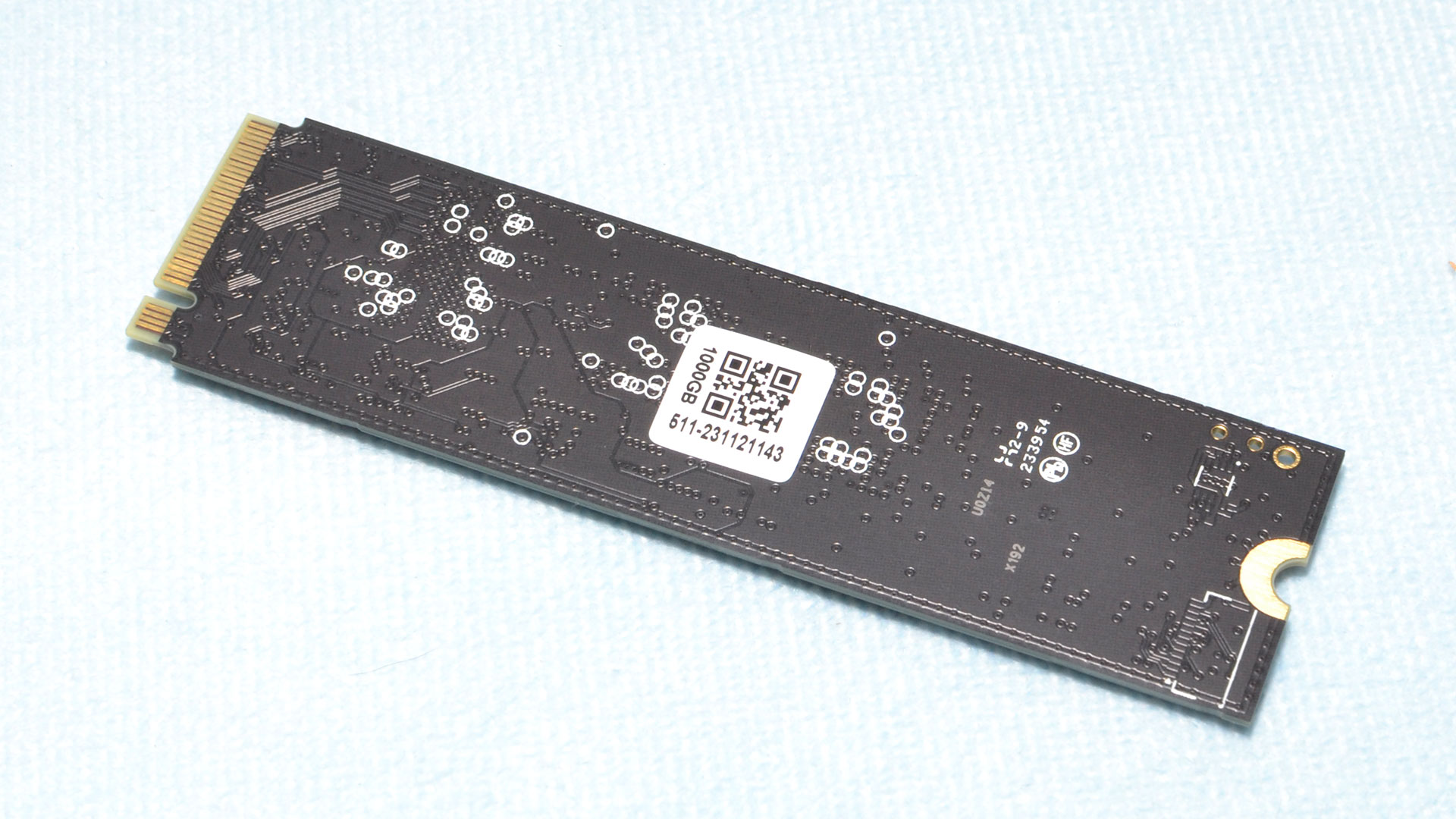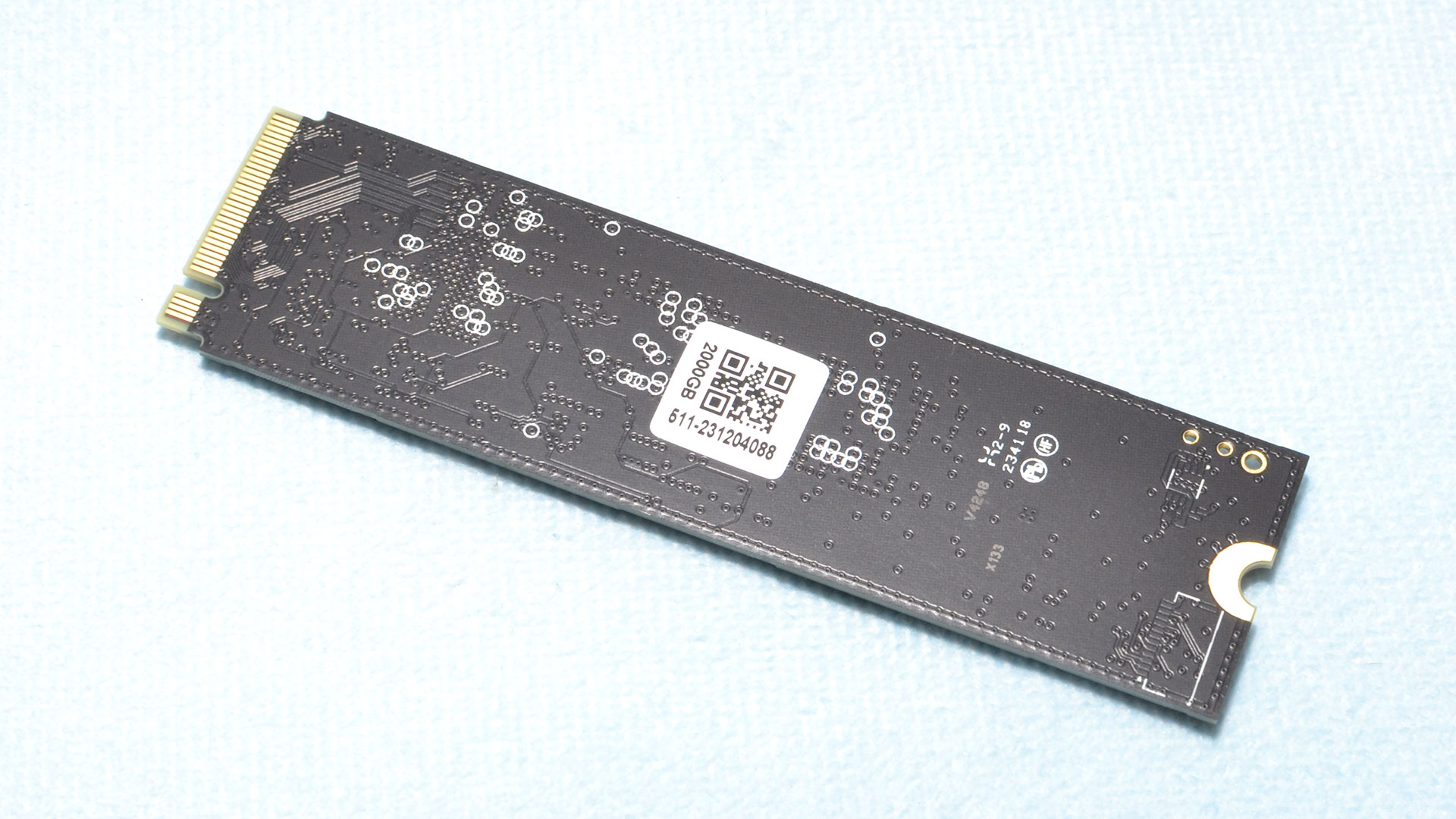Tom's Hardware Verdict
The Inland TN470 is a solid all-around PCIe 4.0 SSD that would be right at home in a laptop, desktop, or PS5. We prefer the 2TB capacity, but even with considerable competition, the current pricing and availability make it a good option.
Pros
- +
Good all-around performance
- +
Power-efficient
Cons
- -
Significant competition
- -
Weaker sustained writes on 1TB model
Why you can trust Tom's Hardware
The Inland TN470 SSD targets a mainstream audience, with a balanced performance profile that works well in a desktop, laptop, or even a PS5. It's potentially the new value champion, as the TN470 is DRAM-less and designed for a tighter budget. The fact that it’s single-sided is icing on the cake, bringing new competition to the best SSDs.
You know new SSD hardware is truly hitting the scene when Inland puts out a fresh drive. Inland is one of many resellers to contract out drive production while handling the retail part, and its place as Micro Center’s house brand ensures builder popularity. The TN470 replaces the popular budget TN450 SSD, offering a combination of a newer, faster controller with fast flash.
Inland doesn't offer anything in the way of software support, though its brick-and-mortar presence and extended, six-year warranty can make for a better customer experience. You can get the same hardware as the bigger names, usually at a reduced price. It’s unsurprising, then, that Inland targeted the most popular capacities with the TN470, with the 2TB model being the most appealing. The 1TB might be a harder sell, and we would like to see more 4TB options in this space, but it’s hard to argue with a drive that hits the 2TB sweet spot in all the ways that matter.
The Inland TN470 isn't the first drive of this type to come out — that honor belongs to the Corsair MP600 Elite — and neither will it be the last, with plenty of other vendors likely to offer similar hardware. We're even seeing some older SSD models being updated with this hardware, though we'd prefer a name change over a spec change while keeping the same name.
We expect M.2 2230 versions of this hardware combination to arrive in time as well, which is good news for Steam Deck and portable system owners. While great budget M.2 2280 options already exist, like the Teamgroup MP44 or even the Crucial T500, more is better. Competing with Maxio MAP1602-based drives like the MP44 seems a difficult hill to climb, but Phison has delivered snappy and efficient performance with the E27T controller that powers the TN470, and the updated BiCS6 flash makes a big difference.




Inland TN470 Specifications
| Product | 1TB | 2TB |
|---|---|---|
| Pricing | $79.99 | $136.99 |
| Form Factor | M.2 2280 (Single-Sided) | M.2 2280 (Single-Sided) |
| Interface / Protocol | x4 PCIe 4.0 / NVMe 1.4 | x4 PCIe 4.0 / NVMe 1.4 |
| Controller | Phison E27T | Phison E27T |
| DRAM | N/A (HMB) | N/A (HMB) |
| Flash Memory | 162-Layer Kioxia TLC (BiCS6) | 162-Layer Kioxia TLC (BiCS6) |
| Sequential Read | 7,300 MB/s | 7,300 MB/s |
| Sequential Write | 6,100 MB/s | 6,400 MB/s |
| Random Read | 900K | 900K |
| Random Write | 800K | 900K |
| Security | N/A | N/A |
| Endurance (TBW) | 600TB | 1,200TB |
| Part Number | 656207 | 656223 |
| Warranty | 6-Year | 6-Year |
The Inland TN470, like the very similar Corsair MP600 Elite, is available in both 1TB and 2TB variants. The imminent Sabrent Rocket 4 update will also use the same hardware as the TN470. Unlike the MP600 Elite, the TN470 has no alternative models with a pre-attached heatsink. At the time of review, the TN470 is priced at $79.99 and $136.99 on Amazon but can be found more inexpensively if you have a Micro Center near you. These prices are $5–$10 lower than the MP600 Elite, though Corsairs drive come with a heatsink.
Performance-wise, the TN470 is rated to reach up to 7,300 / 6,400 MB/s for sequential reads and writes, and up to 900K / 900K random read and write IOPS. This is within the ballpark of competing drives with comparable but different hardware, like the Lexar NM790, Teamgroup MP44, or Silicon Power US75. This makes for a competitive space, especially if you loop in the Crucial T500 and older PCIe 4.0 SSDs. Inland stands out with its warranty which, while still only 600TB of writes per TB capacity, has a length of six years rather than the standard five.
Inland TN470 Software and Accessories
Inland does not provide any software support — not even firmware updates, as far as we're aware. We recommend the free CrystalDiskInfo to check drive information and health, CrystalDiskMark for basic benchmarking, and Clonezilla for cloning and imaging. An M.2 screw is not provided, but should come preinstalled or as an included accessory for your host system.
Inland TN470: A Closer Look




The 1TB and 2TB TN470s look very similar. These drives are single-sided and are therefore a good choice for laptops and the PS5, as well as for desktops. You can see the tentative Micro Center pricing on the packaging, though actual prices are much lower than what's shown here on the drives we were sampled. Micro Center shows prices of $69.99 and $129.99, for reference.


The TN470 has an SSD controller, no external DRAM, and two NAND packages. This is the expected configuration for drives based on the Phison E27T in the M.2 2280 form factor, while only a single NAND package would be utilized for M.2 2230. With flash at 1Tb per die and up to sixteen dies per package, this enables up to 2TB or 4TB drives in the two form factors while remaining single-sided. However, 2TB is the initial cap for the 2280.
The E27T could be seen as an upgraded or enhanced version of the popular E21T controller. The E21T is used in many popular drives, from the M.2 2230 Sabrent Rocket 2230 to the popular budget Teamgroup MP44L. Both controllers work fine with TLC or QLC NAND. The E27T is clocked higher to handle the higher bus speeds, allowing for more throughput, and it can use both current and future flash. It also has an error correction edge on the E21T with an updated LDPC engine at 4K rather than 2K.
The E21T was most commonly paired with Micron’s 176-Layer flash, which tops out at 1600 MT/s. With a four-channel controller, this means around 5 GB/s. The BiCS6 used with the E27T — in the TN470, MP600 Elite, and Rocket 4, so far — is rated for 2,400 MT/s and can therefore max out the PCIe 4.0 interface. The same is true of YMTC’s 232-Layer flash that’s paired with the Maxio MAP1602 controller with some example drives listed above. There’s also SMI’s SM2268XT, which we haven’t had the pleasure of reviewing yet, and the DRAM-equipped Phison E25T on the Crucial T500. The T500 uses Micron’s 232-Layer TLC, which can also hit 2400 MT/s.
What’s the difference between all these DRAM-less controllers at the upper end of the PCIe 4.0 spectrum? Besides the E27T’s ability to use future flash — which won’t bring much more sequential performance, but could improve 4KB performance and power efficiency — these are all 12nm, ARM-based designs. We expect the SM2268XT to match up against the E27T, just like the SM2269XT does with the E21T — see our Lexar Play SSD Review to get a basic idea. The MAP1602, for its part, is a quad-core design at lower clocks, which makes for power-efficient drives when paired with YMTC’s flash, but the flash is doing at least some of the heavy lifting. In our testing of the MP600 Elite, however, we found that the E27T with BiCS6 was often snappier and as a whole punched above its weight.
MORE: Best SSDs
MORE: Best Hard Drive
Get Tom's Hardware's best news and in-depth reviews, straight to your inbox.
MORE: Best SSD for the Steam Deck

Shane Downing is a Freelance Reviewer for Tom’s Hardware US, covering consumer storage hardware.
-
phillipnolan amazing turn around? https://www.tomshardware.com/reviews/inland-performance-ssd-review-the-low-performance-nicheReply -
Rokinamerica Reply
You realize you linked to a different drive, right?phillipnolan said:amazing turn around? https://www.tomshardware.com/reviews/inland-performance-ssd-review-the-low-performance-niche -
ohio_buckeye Been using inland products at times for a while and no major complaints. My wife’s desktop has a 480gb sata ssd from inland in it that’s probably at least 3-4 years old. No issues with it.Reply -
HaninTH A set of 4 x 2TB of these in a ZFS pool for VM Guest hosting? Might be a fun experiment!Reply -
Avro Arrow This seems weird to me. According to Inland's specifications, this thing rivals the far more expensive WD BLACK SN850X.Reply
Micro Center's marketing team is asleep at the wheel. If I was in charge, this SSD wouldn't be called the TN470, it would be called "Taipan" as in, "Inland Taipan".
-
Amdlova If you have a spare pcix 4 or a 22110 slot have some enterprise ssds around new. Got one toshiba xd5 1.92 tb for 85us on ebay new...Reply
You can waste it 3650tb of writes... you will die but this drive will remain -
johnxmiles ReplyTom's Hardware Verdict
The Inland TN470 is a solid all-around PCIe 4.0 SSD that would be right at home in a laptop, desktop, or PS5. We prefer the 2TB capacity, but even with considerable competition, the current pricing and availability make it a good option.
$79.99 at Amazon is CLICK BAIT& SWITCH as at this point, only 2TB has been mentioned and this price is for only an 1TB. A direct click to the 2TB site would have shown a $136.99 price which is a good deal. So why should I trust Tom Hardware when it uses ClickBait & Switch tricks? I know that “selling your soul” is a common practice these days but hold off to find a buyer worthy of your soul.